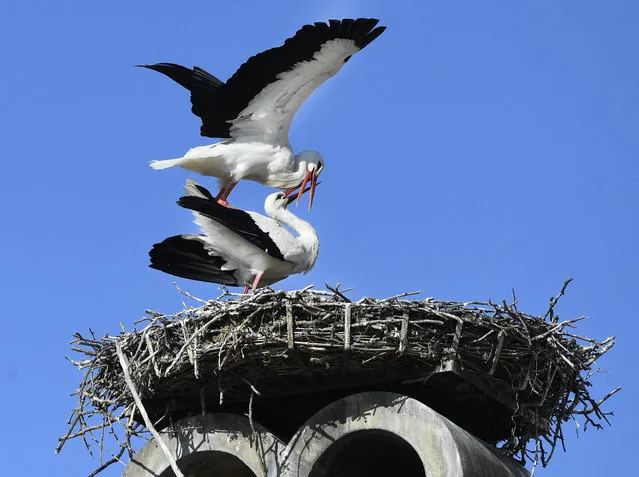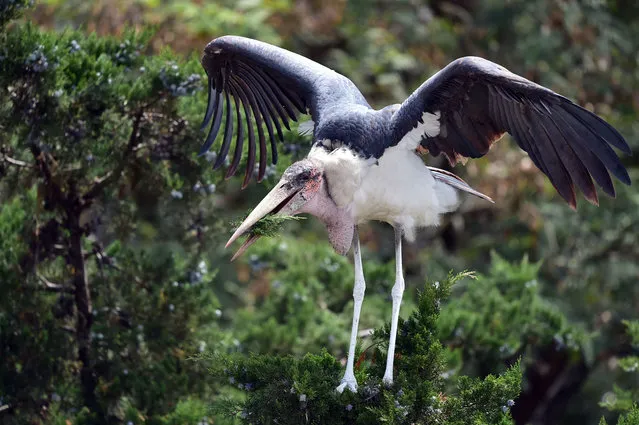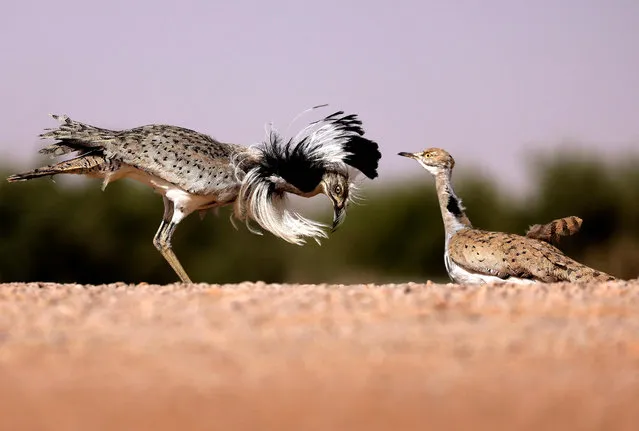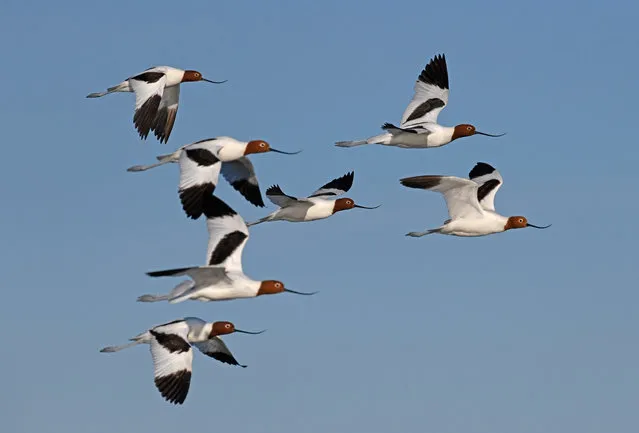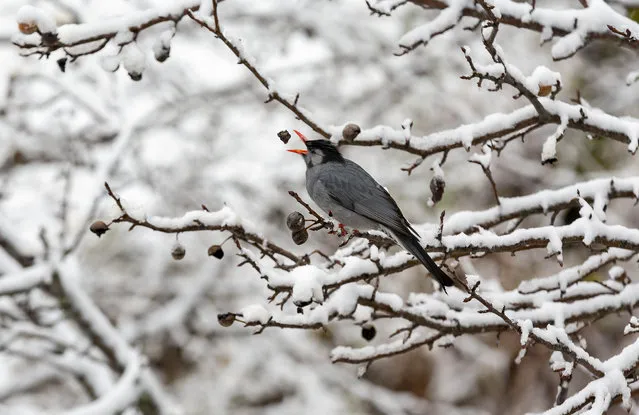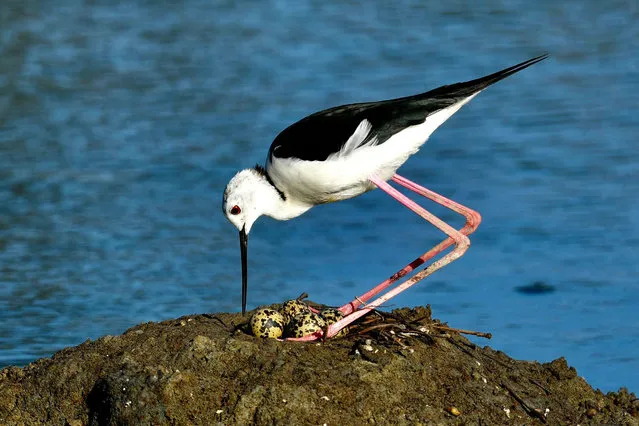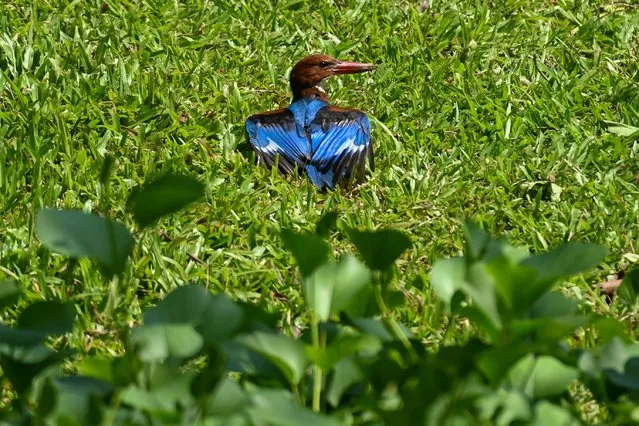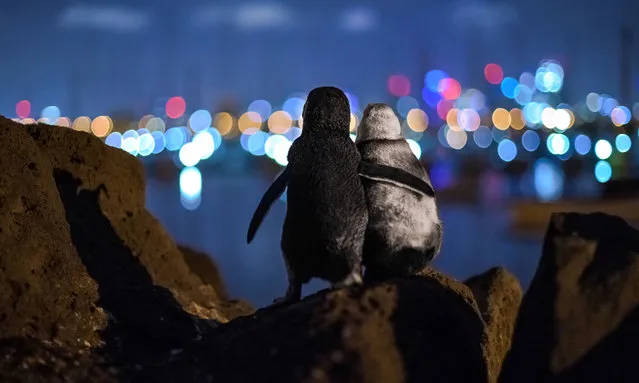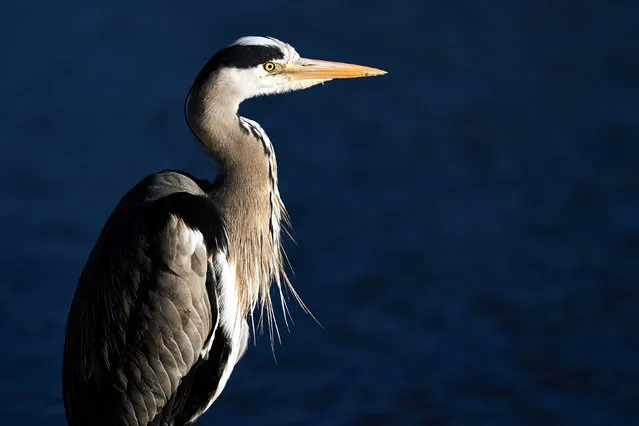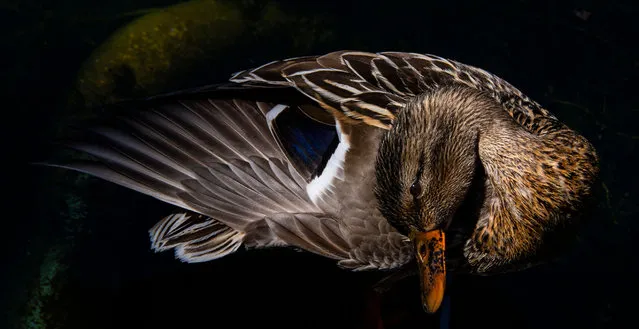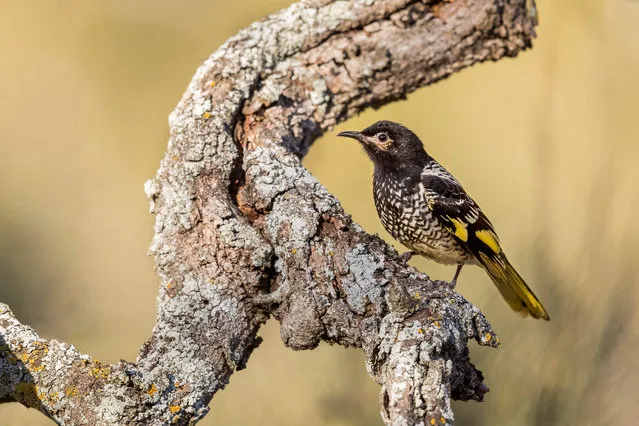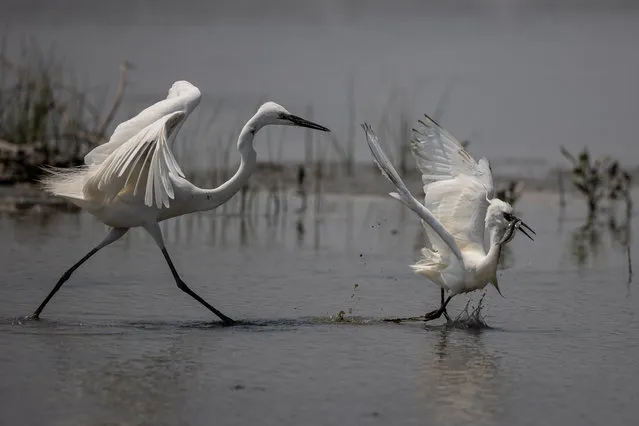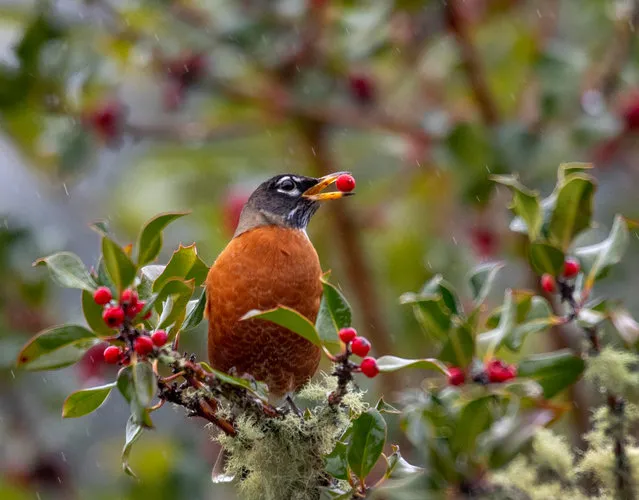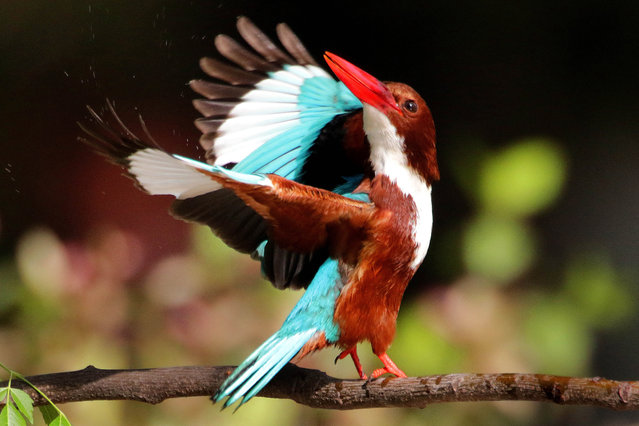
Storks are seen on their nest in Rust in the Burgenland region, Austria, on March 16, 2021. (Photo by Robert Jaeger/APA/AFP Photo)
A marabou stork bird (Leptoptilos crumenifer) lands ontop of a tree in Nairobi, on July 23, 2021. (Photo by Simon Maina/AFP Photo)
A male houbara bustard dances in order to attract females for mating in the United Arab Emirates’ al-Dhafra desert on March 19, 2021, (Photo by Karim Sahib/AFP Photo)
Red-necked avocets in flight showing their unusual curved beaks in October 2020. At approximately 13 miles long, Lake Cowal is the largest natural inland lake in New South Wales, Australia. After years of drought it began filling in March this year, and native and migratory waterbirds began returning to its wetlands. (Photo by Mal Carnegie/Lake Cowal Conservation Centre)
A Black Bulbul opens its beak to catch a piece of wild pear as it sits on a snow covered tree in Dharmsala, India, Monday, December 28, 2020. Black Bulbul are often seen in small groups, either roosting or flying about in search of food. (Photo by Ashwini Bhatia/AP Photo)
A black-winged stilt checks eggs from its nest on a wetland in Hsinchu, Taiwan during the breeding season on June 17, 2021. (Photo by Sam Yeh/AFP Photo)
A white-throated kingfisher dries its feathers in a park in Singapore on June 21, 2021. (Photo by Roslan Rahman/AFP Photo)
Two fairy penguins “flipper in flipper”. The photo was taken by Tobias Baumgaertner in 2020. St Kilda Pier in Melbourne has a colony of around 1,400 fairy penguins, the smallest penguin species with an average height of just 33cm (13 inches). The colony is monitored by volunteers. “A volunteer approached me and told me that the white one was an elderly lady who had lost her partner and apparently so did the younger male to the left”, Mr Baumgaertner wrote on Instagram. “Since then they meet regularly, comforting each other and standing together for hours watching the dancing lights of the nearby city”. (Photo by Tobias Baumgaertner/Ocean Photography Awards/PA Wire)
Goldfinches feeding in Worcestershire, Strensham, England on December 28, 2020. In the aftermath of Storm Bella swathes of the UK are braced for a cold snap, with snow and ice warnings in force across the country. (Photo by David Davies/PA Media via Getty Images)
A heron in Bushy Park in London, United Kingdom on Tuesday, April 6, 2021. (Photo by John Walton/PA Images via Getty Images)
A duck twists its neck as it cleans itself in the sun in a pond in Berlin on June 14, 2021. (Photo by John MacDougall/AFP Photo)
This undated handout photo received from Australian National University on March 17, 2021 shows a rare Australian songbird, a female regent honeyeater, at the Capertee National Park in New South Wales. A rapid decline in Australia’s rare regent honeyeater is killing off the bird’s “song culture”, with its young struggling to learn mating calls as adults disappear, according to new research on March 17, 2021. (Photo by David Stowe/Australian National University/AFP Photo)
Two egrets fight over a mudskipper in the Mai Po Nature Reserve in Hong Kong, China, 21 April 2021. The reserve is situated in the area of 1,500 hectares of wetlands around Mai Po and Inner Deep Day, facing Shenzhen, formally designated “Wetland of International importance” under the Ramsar Convention. Some parts of the reserve, such as floating bird-hides, are in the Frontier Closed Area and a special permit is needed to be granted access. (Photo by Jerome Favre/EPA/EFE)
An American robin feasts on bright-red English holly berries on a tree near Elkton in rural western Oregon. Originally planted to be decorative, holly now grows wild in much of the Pacific Northwest and is considered an invasive species. The berries of the holly plant are poisonous to people and pets. (Photo by Robin Loznak/Zuma Press/PA Images)
A white-throated kingfisher (Halcyon smyrnensis) sits over a tree in a field in Lahore, Pakistan, 26 March 2021. The most familiar Kingfisher species can be observed perched on branches or walls while on the lookout for grubs, insects and even fish in streams or garden ponds. (Photo by Rahat Dar/EPA/EFE)

